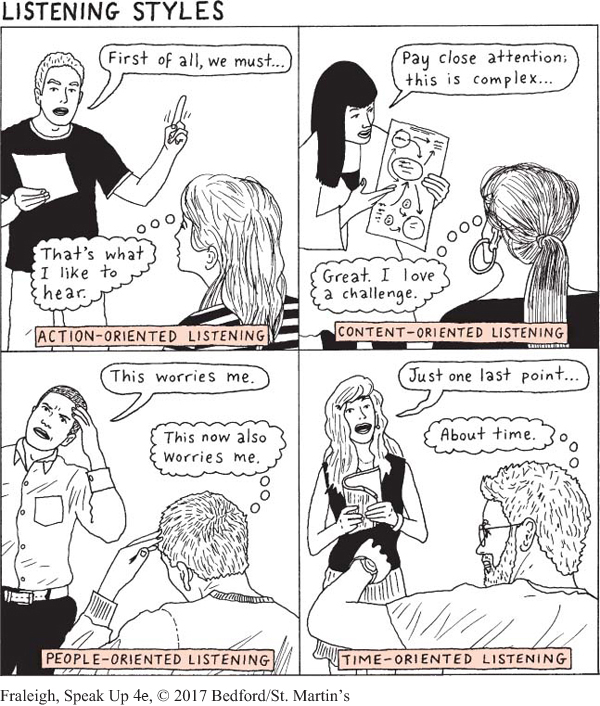Listening Styles
Research shows that the different ways people listen can be categorized into specific styles. In general, most people usually default to a specific style out of habit9 and are reluctant to switch from the style of listening they usually use,10 even if doing so might make them better at receiving and retaining information. In fact, it appears that most people default to a traditional style of listening out of habit.11 The best listeners, however, often will modify or alter their listening behavior depending on the context or situation.12 If you are able to recognize these styles and adapt them to certain situations, this can help maximize your listening behavior as both a speaker and an audience member. As a speaker, you can recognize the style your audience might be using and adapt your message and delivery to best connect with them. As an audience member, you can change your listening style based on your situation in order to maximize your listening skills.
Learning about the different listening styles—
Action-
oriented listening . People who use this style of listening usually focus on immediately getting to the meaning of a message and determining what response is required. These listeners indicate a preference for messages that are direct, concise, and error-free. Conversely, these listeners are easily frustrated by those who ramble or take a while to get to the point. Content-
oriented listening . In contrast to action-oriented listeners, content- oriented listeners favor depth and complexity of information and messages. They are willing to spend more time listening, pay careful attention to what’s being said, and enjoy discussing and thinking about the message afterwards. People-
oriented listening . Like content-oriented listeners, people- oriented listeners are willing to invest time and attention in communications, yet they are differentiated by their interest in being supportive of friends and strengthening relationships. These listeners notice the mood and body language of speakers and express more empathy toward them. Page 99
Time-
oriented listening . The major identifying element of this listening style is time—or more precisely, a concern with managing time. These listeners see time as a precious resource to be conserved and protected. Thus, they can exhibit impatience and rush interactions.14
Did you recognize any of these styles as your default? Using one or two of them more often doesn’t mean you can’t embrace other styles and use them in appropriate contexts. Do you have a friend with personal problems who needs someone to talk to? Most likely, a people-
